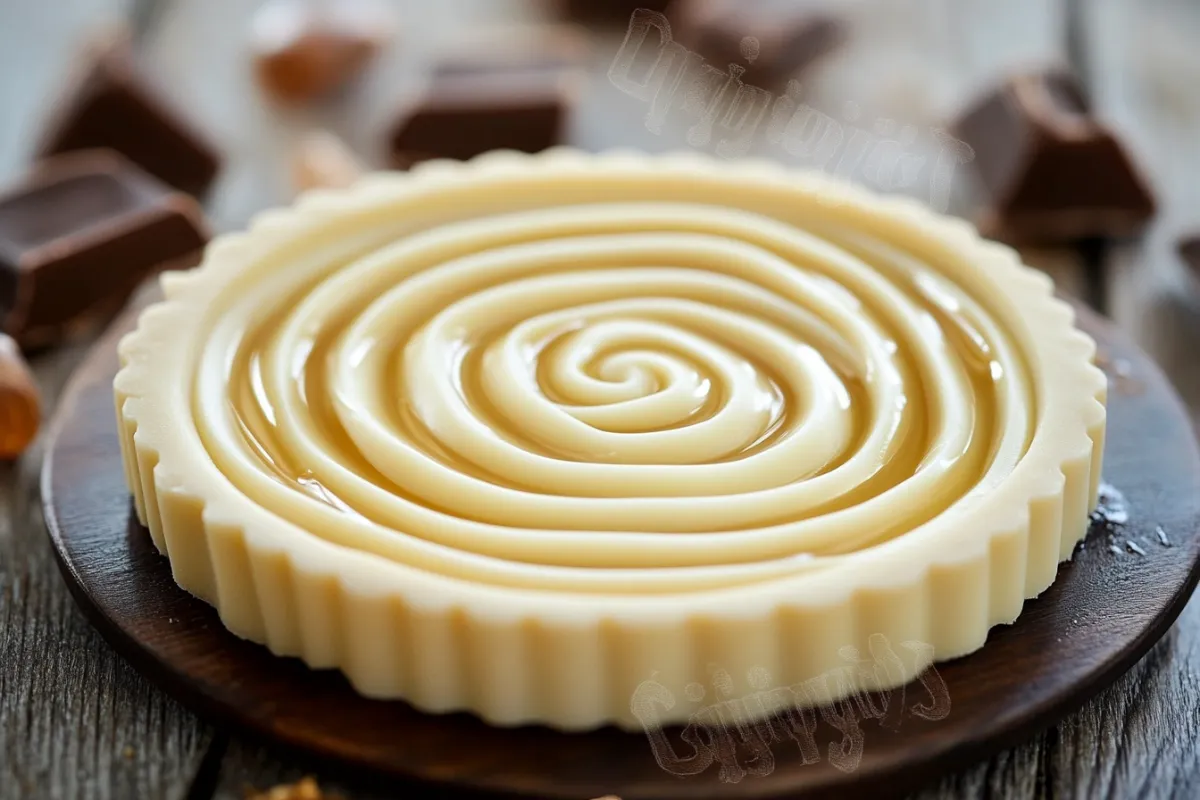The Complete Guide to White Chocolate: History, Health, and Uses
Introduction to White Chocolate
White chocolate is one of the most distinctive and debated types of chocolate in the confectionery world. Unlike its darker counterparts, this sweet treat lacks cocoa solids, which gives it its creamy color and unique flavor. This article will delve into everything there is to know about this confection, from its ingredients and history to its health aspects and uses in cooking. We will also explore the ongoing debate about whether it truly qualifies as chocolate.
What Is White Chocolate?
Ingredients
The primary ingredients in this type of chocolate include cocoa butter, sugar, and milk solids. Unlike other varieties like milk and dark chocolate, which contain cocoa solids, this version is made exclusively from the fatty component of the cocoa bean—cocoa butter. This gives it its smooth texture and mild flavor.
- Cocoa Butter: This is the essential fat extracted from cocoa beans, giving the confection its creamy texture.
- Sugar: Sugar adds sweetness and enhances the overall flavor.
- Milk Solids: These are often added to give the product its characteristic creaminess and smoothness.
To be legally classified as this type of chocolate, the product must contain at least 20% cocoa butter, 14% milk solids, and 3.5% milk fat, according to U.S. and European regulations. However, these standards can vary slightly depending on the country.
Legal Definitions
Different countries have specific legal definitions for what can be labeled as this type of chocolate. In the United States, the FDA requires that it contains at least 20% cocoa butter, 14% milk solids, and no more than 55% sugar or other sweeteners. In the European Union, the product must also adhere to similar standards but can have slight variations in cocoa butter and sugar content.
Comparison with Other Chocolates
Compared to other varieties, this type of chocolate is often considered less “chocolatey” because it lacks cocoa solids, the component that gives other types their deep, rich flavor. Instead, it offers a creamy, sweet taste with a smooth mouthfeel. While milk and dark chocolates contain a mix of cocoa solids and cocoa butter, this variant is made purely from cocoa butter, which makes it unique in texture and flavor.
A Brief History of White Chocolate
Origins
The history of this confection is relatively short compared to its darker counterparts. The product was first introduced by Nestlé in the 1930s. The company created this variant as a way to use excess cocoa butter, which is a byproduct of dark chocolate production. The first bar of this type was called the “Milkybar,” which remains popular in many countries today.
For more on the broader history of chocolate, you can explore the History Behind Chocolate.
Key Developments
After its introduction, the new confection quickly gained popularity, especially in Europe and North America. Over the years, different brands have developed their versions, experimenting with the ratio of ingredients and the addition of flavors. Today, this product is a staple in the confectionery industry, used in everything from candy bars to gourmet desserts.
Evolution in the Market
The product has evolved significantly since its inception. Initially seen as a novelty, it is now considered a versatile ingredient in both commercial and artisanal chocolate-making. Modern products often include additional flavors like vanilla, caramel, and fruit, enhancing their appeal. Despite ongoing debates about whether it is “real” chocolate, its popularity continues to grow.
Understanding the Production Process
The Process
Making this product involves several key steps, starting with the extraction of cocoa butter from cocoa beans. The process includes:
- Extraction of Cocoa Butter: Cocoa beans are roasted and then pressed to separate the cocoa butter from the cocoa solids.
- Mixing Ingredients: Cocoa butter is then combined with sugar, milk solids, and flavorings to create a smooth mixture.
- Tempering: The mixture is tempered to ensure the final product has a smooth texture and a glossy finish.
- Molding and Cooling: Finally, the tempered product is poured into molds and cooled to solidify.
Key Techniques in Chocolate Making
Tempering and conching are critical techniques in making high-quality products. Tempering involves carefully heating and cooling the chocolate to stabilize the cocoa butter crystals, which gives the final product a smooth texture and shiny appearance. Conching, on the other hand, refers to the process of continuously mixing the chocolate to refine its texture and flavor.
Differences Between Artisanal and Mass-Produced Chocolate
There is a significant difference between artisanal and mass-produced versions of this product. Artisanal products are often made in small batches with high-quality ingredients and a focus on craftsmanship. This results in a product with a more complex flavor and a smoother texture. Mass-produced versions, while more affordable and accessible, may use lower-quality ingredients and additives to cut costs, affecting the final product’s flavor and texture.
Culinary Uses and Pairings
Popular Applications in Desserts
This type of chocolate is a versatile ingredient used in various desserts, including cakes, cookies, and truffles. Its creamy texture and sweet flavor make it an excellent addition to both baked goods and confections.
- Cakes: This product can be used in cake batters or as a frosting to add richness and sweetness.
- Cookies: Chips of this chocolate are a popular addition to cookies, providing a sweet contrast to other ingredients like nuts or cranberries.
- Truffles: It is often used as a coating for truffles, creating a smooth, creamy exterior that pairs well with various fillings.
Best Flavor Pairings
This sweet treat pairs exceptionally well with a wide range of flavors. Its mild sweetness complements tart fruits like raspberries, citrus, and even savory ingredients like nuts or herbs.
- Berries: The tartness of berries like raspberries or strawberries pairs beautifully with the sweetness of this chocolate.
- Citrus: The bright acidity of citrus fruits like lemon or orange cuts through the richness, creating a balanced flavor profile.
- Nuts: Nuts like almonds, pistachios, and macadamias add a crunchy texture and a slightly savory contrast to the creaminess of this product.
Recipe Ideas and Tips
Here are a few tips and recipes to make the most of this product in your kitchen:
- White Chocolate Ganache: Use this product to create a rich ganache, perfect for drizzling over cakes or using as a filling in pastries.
- White Chocolate Mousse: Combine this chocolate with whipped cream and vanilla to make a light, airy mousse that can be served on its own or as a dessert topping.
- Baking Tips: When melting this product, use a double boiler to prevent it from scorching. Be careful not to overheat, as it can seize easily.
Health Aspects of White Chocolate
Nutritional Overview
This type of chocolate is high in calories, fat, and sugar, making it a rich and indulgent treat. A typical serving (about 1 ounce or 28 grams) contains:
- Calories: Approximately 150-170 calories.
- Fat: Around 9-10 grams, with a significant portion being saturated fat.
- Sugar: Typically contains 15-20 grams of sugar, depending on the brand and formulation.
This chocolate lacks the antioxidants and higher cocoa content found in dark chocolate, which limits its potential health benefits.
Pros and Cons for Health
While this confection is not as nutritionally beneficial as dark chocolate, it still contains some health benefits, primarily from the cocoa butter. Cocoa butter is rich in healthy fats and can provide a small amount of antioxidants. However, the high sugar and fat content can pose health risks if consumed in large quantities, including weight gain, increased risk of heart disease, and potential insulin resistance.
For more on the health benefits and risks of chocolate, refer to the Benefits of Eating Chocolate.
Comparing with Other Types of Chocolate
Nutritionally, this product falls short compared to dark and milk chocolate. While dark chocolate is celebrated for its high levels of antioxidants and lower sugar content, this variant is primarily a source of empty calories, with little nutritional value beyond the fats in cocoa butter.
Frequently Asked Questions
Is white chocolate really chocolate?
Technically, this product is considered chocolate because it contains cocoa butter, a key component of the cocoa bean. However, it lacks cocoa solids, which are present in milk and dark chocolate, leading to debates about its classification.
What is the difference between white chocolate and other types of chocolate?
The primary difference lies in the ingredients. This variant is made from cocoa butter, sugar, and milk solids, while milk and dark chocolates contain cocoa solids, which contribute to their darker color and richer flavor.
Is white chocolate healthier than dark chocolate?
Dark chocolate is generally considered healthier due to its higher cocoa content and lower sugar levels. This product contains more sugar and fewer antioxidants, making it less beneficial from a health perspective.
Can white chocolate be used in the same way as milk or dark chocolate in recipes?
This product can be used in many of the same ways as milk or dark chocolate, but it may require adjustments due to its different melting point and sweetness level. It pairs well with certain flavors that might not work as well with dark chocolate.
Why does white chocolate taste so different from dark chocolate?
The taste difference comes from the lack of cocoa solids in this product. Cocoa solids provide the deep, rich flavor associated with dark chocolate, while this variant offers a milder, sweeter taste due to its high sugar and milk content.
Conclusion: The Role of White Chocolate in Confectionery
In conclusion, this confection occupies a unique place in the world of confections. While it may not have the same depth of flavor or health benefits as dark chocolate, it offers a creamy sweetness that many find irresistible. Whether used in baking, cooking, or simply enjoyed on its own, this product provides versatility and a distinctive taste that sets it apart from other types of chocolate. Despite the ongoing debate about whether it is truly chocolate, its popularity continues to grow, and its role in confectionery remains significant.
To discover the best chocolate brands that also produce this type of chocolate, you might find it useful to read about What Is the Best Chocolate in the World? A Guide to Top Brands.


1 thought on “White Chocolate ,the Complete Guide : History, Health, and Uses”